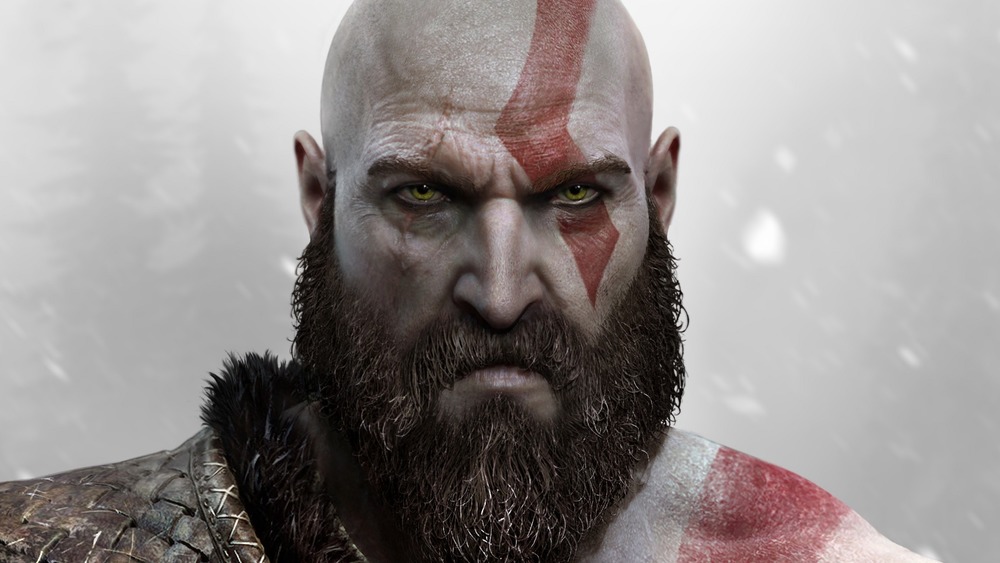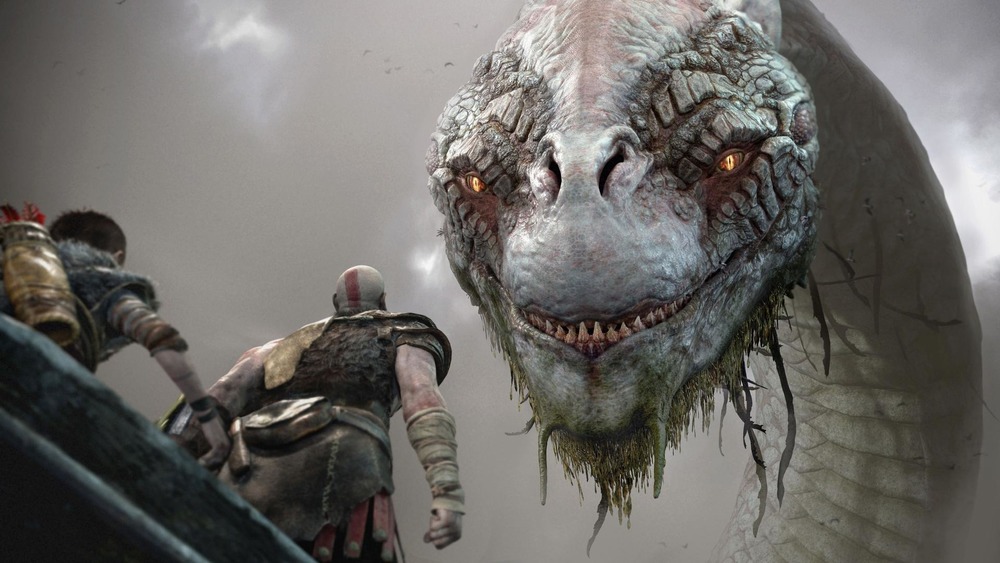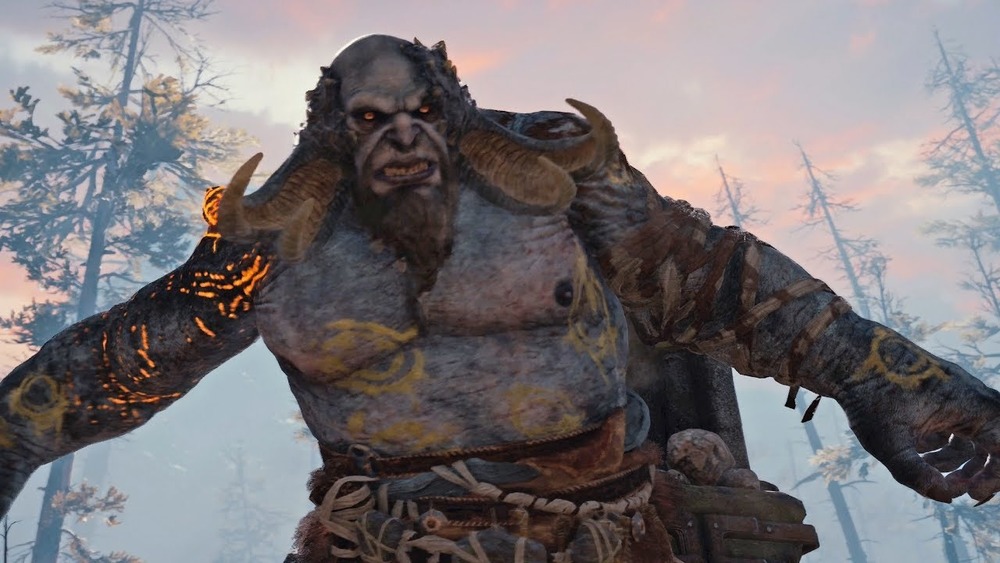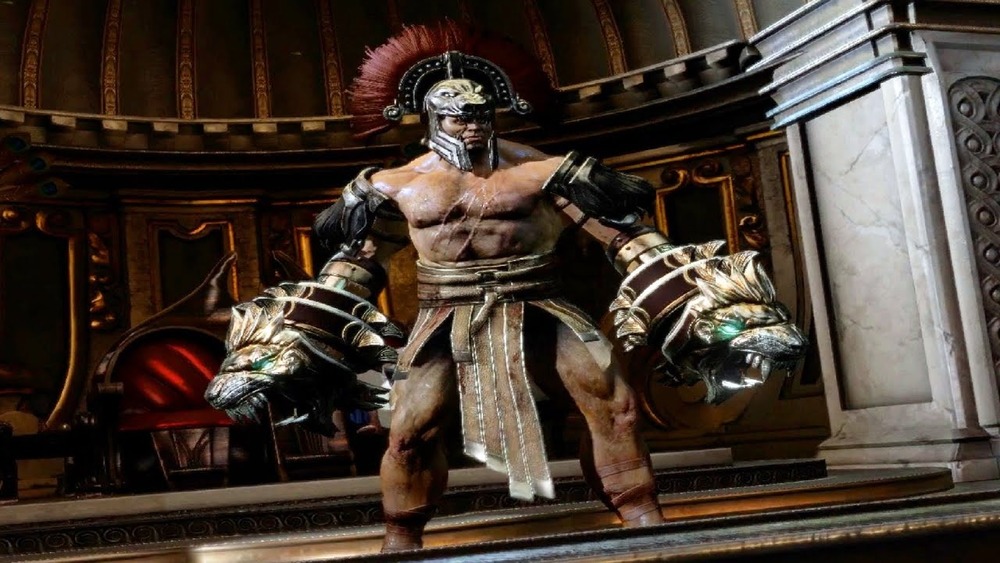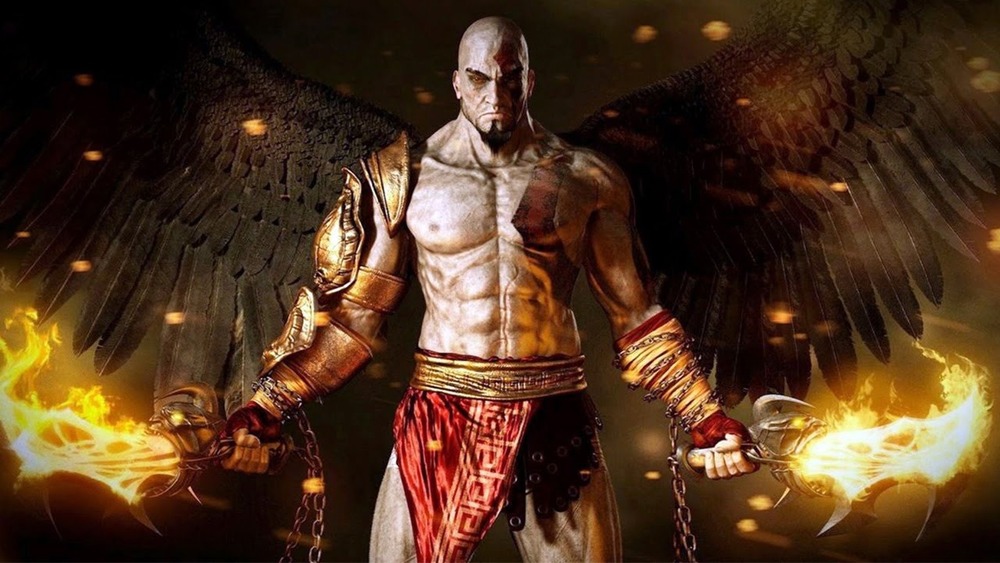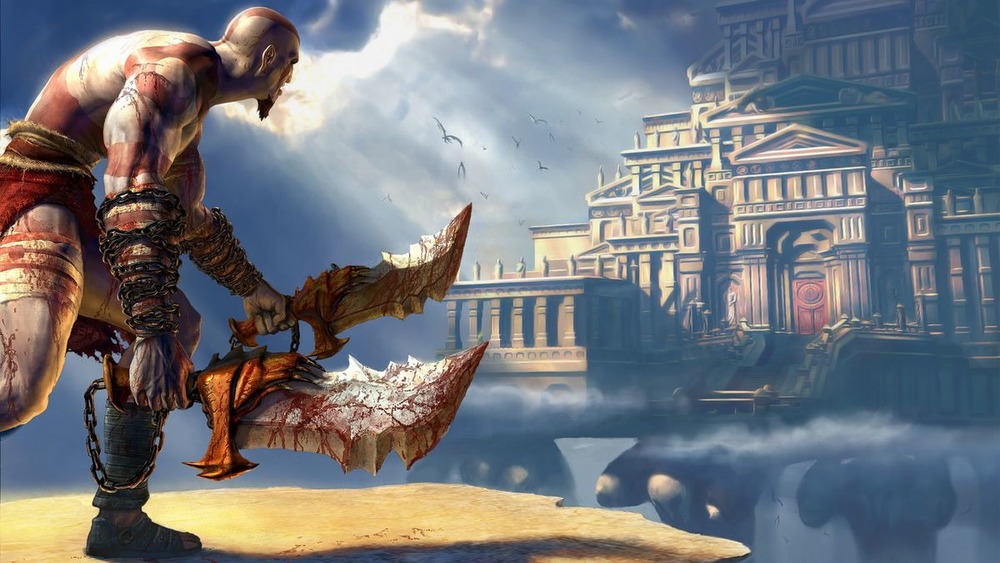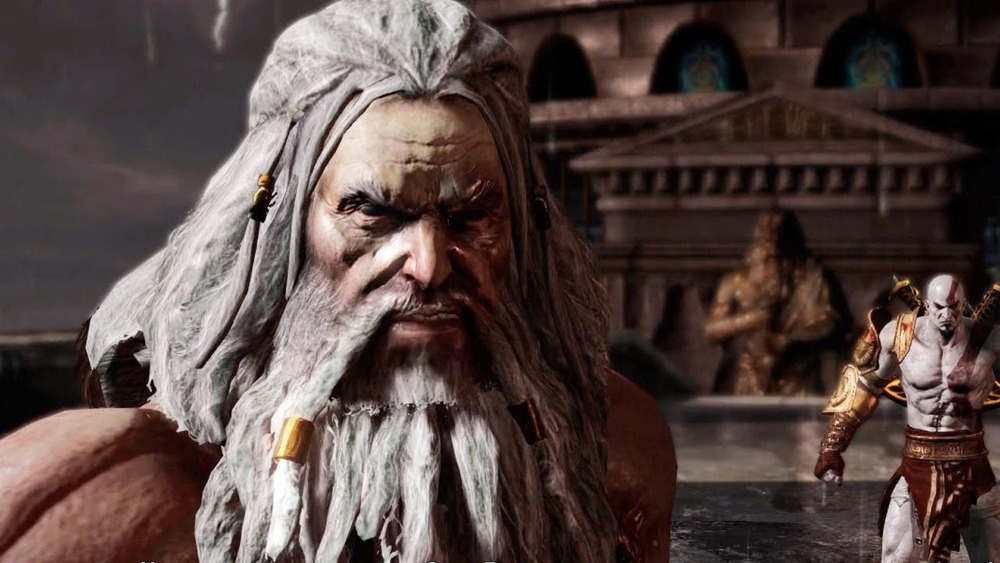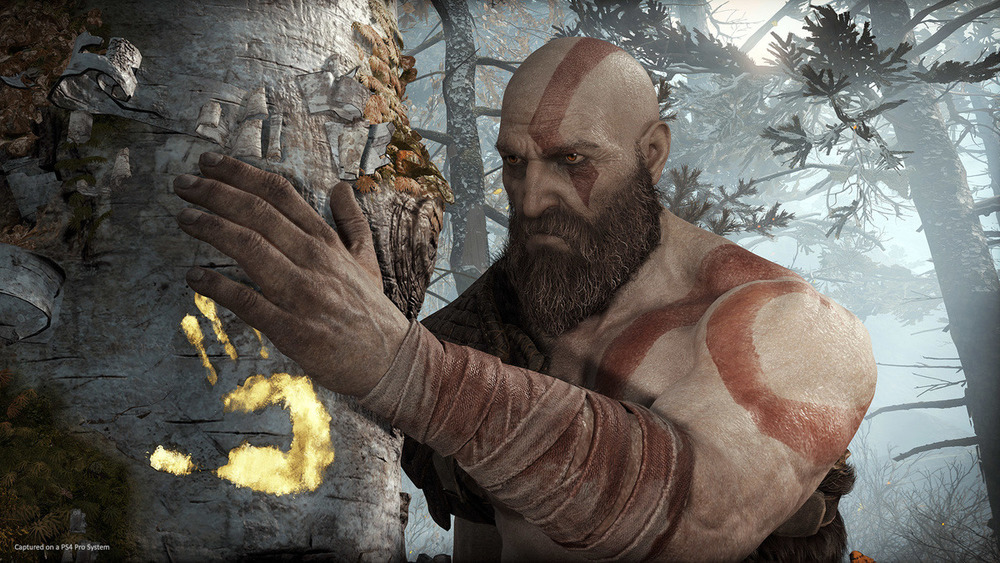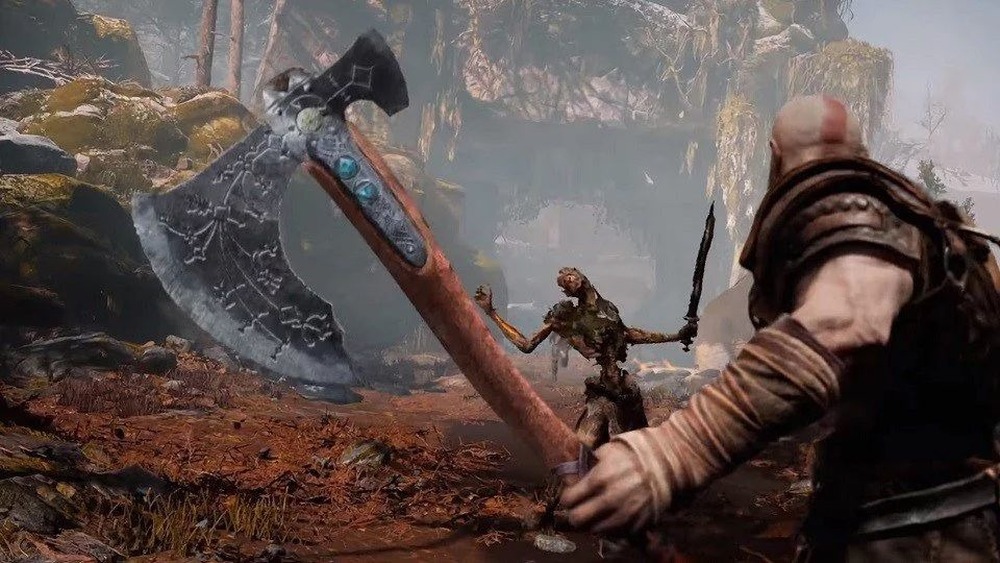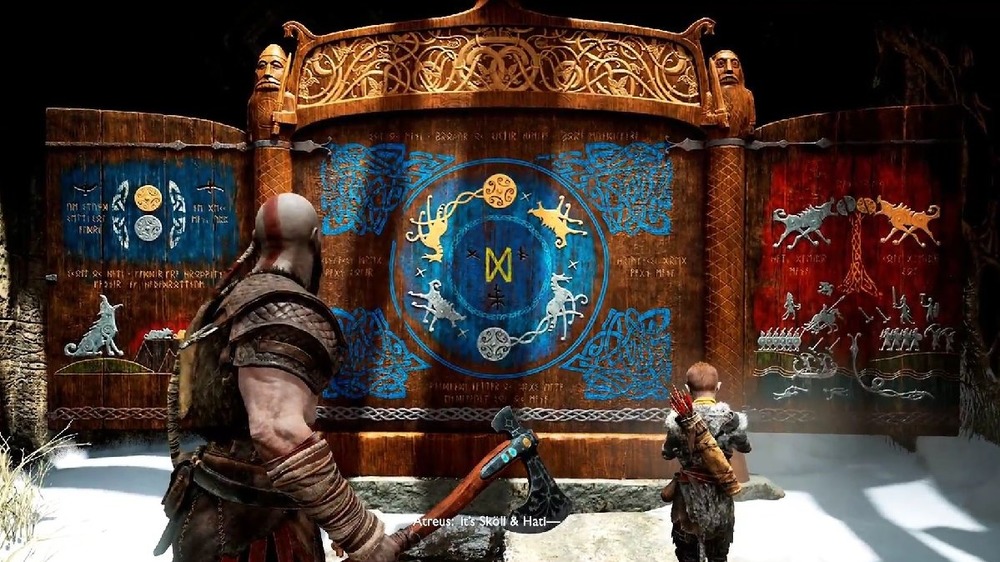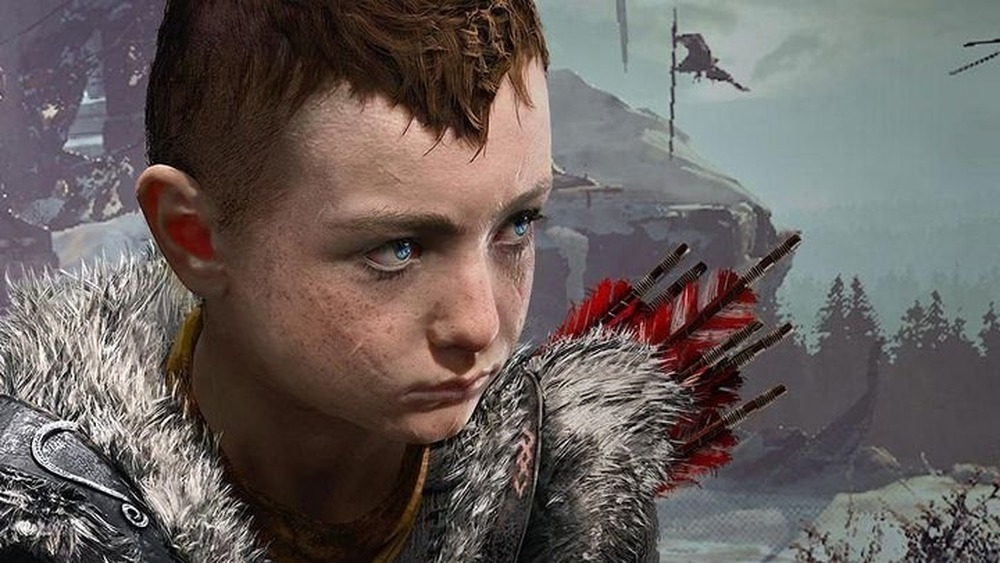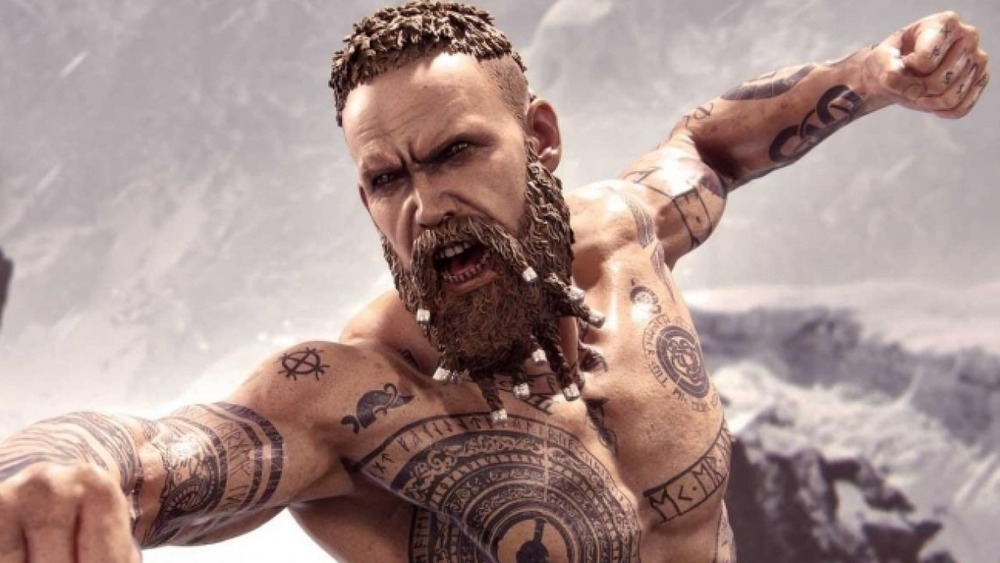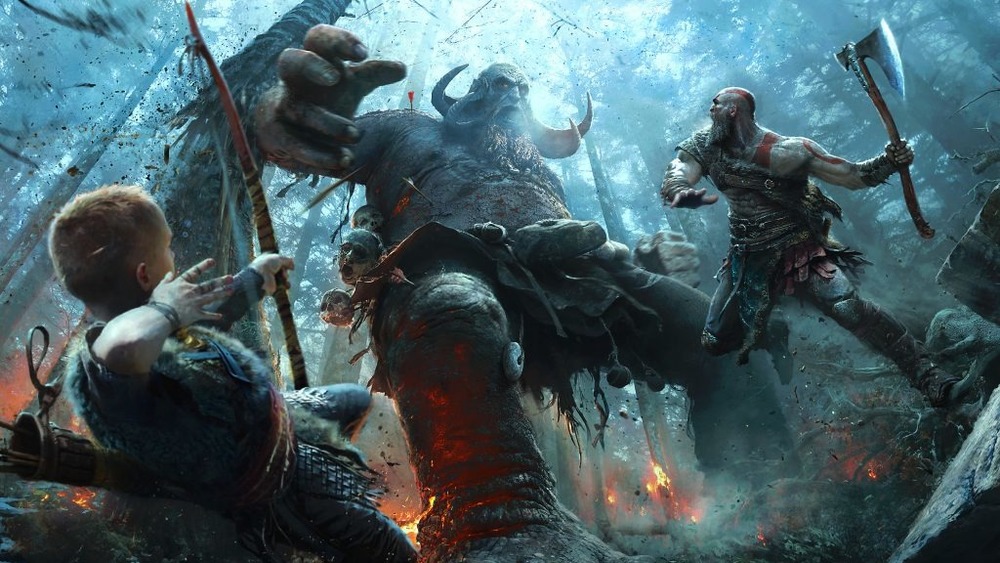The Mythology In God Of War Explained
The God of War franchise has matured considerably since its early days. Once known for its gratuitous sex and violence, its latest release focused on a heart wrenching (yet still somewhat violent) journey with serious meditations on masculinity, fatherhood, and destiny. The long-running series has a deep body of lore including mobile spin-offs, interquels, and main franchise entries that spans nine titles. With a tenth hotly anticipated, fans may want to know more about God of War's overarching story.
Apart from its adult storytelling and combat, God of War is known for the way it works mythology into the fold. The series' first era is set in Ancient Greece, and follows Kratos' ascension to become the God of War, as well as his journey for vengeance against the Olympian pantheon. The second era is set in pre-Viking Scandinavia, and sees Kratos pursuing a personal quest to lay his second wife to rest while accompanied by his young son, Atreus.
These settings are in line with the rules God of War games must follow, as mythology is an essential tool the series uses to tell its tales. Below, you'll learn more about how various mythologies intersect with the God of War universe, and how the franchise has changed them to meet its needs.
God of War's ambiguous creation story
The greatest mystery in the God of War universe — aside from what will happen next — is how Kratos' world was first created. Both Norse and Greek mythologies exist in the world, including their competing creation myths.
In an interview with GameSpot, Cory Barlog of Santa Monica Studio explained that belief systems in the world of God of War are only separated by geography. The 2018 release God of War uses a semi-mystical timeframe of the pre-migration era in Norway when the gods still walked the earth, which, with some fanciful artistic license, could easily account for the gaps between games.
But this leaves to question whether the entire world has a common origin, or different regions were created by distinct supernatural forces. While this is an intriguing question that would likely entail a complicated answer, it does not appear to be a priority for the franchise, and it is ultimately non-essential to the narrative integrity of both eras.
Fantastic foes and where to fight them
In both the game's Greek and Norse eras, the enemies Kratos faces, such as harpies, draugir, satyrs, trolls, and so on, are lifted directly from passages of myth, or popular interpretations thereof. As a result, Kratos' enemies require little-to-no creative license to be compelling foes.
Harpies, for example, appear throughout the Greek-era God of War games. While early portrayals of Harpies were not ugly or inherently loathsome, the games draws from later conceptions of Harpies as grotesque bird/woman hybrids. Mechanically, they swoop and harry Kratos, forcing players to time their strikes or engage in aerial combat to dispatch them.
In contrast, in the Norse-era titles, trolls make particularly meaty enemies, as per their ancient descriptions. Unlike weaker, rank-and-file enemies — such as the decaying, undead draugir — trolls often serve as mini-bosses that guard specific locations, similar to the myth of trolls acting as gatekeepers for bridges or thoroughfares, exacting tolls from passers by.
The myth of heroes
A recurring theme in God of War's storytelling is that heroes are rarely what they appear and the mark of heroism is most often measured in bloodshed rather than noble deeds. This is illustrated by Kratos' duels with various Olympian Heroes, including Perseus, and later, Kratos' half-brother, Hercules. Both warriors are proud, intensely jealous, and readily willing to kill people to solve their problems. They are not the enlightened, praiseworthy souls portrayed in myth.
Kratos himself is a hero in the literal sense of being sired by Zeus, as well as a hero in the sense of military achievement on the battlefield as a Spartan. But his bloodlust and insatiable desire for vengeance make him an unquestionably morally ambiguous figure at best. His character has softened, somewhat, by 2018's God of War. But the series continues to invert legends associated with heroism in mythology, as evidenced by its portrayal of Baldur.
A Spartan's revenge and apotheosis
The original God of War title tells the story of Kratos' apotheosis, or his ascension from mortality to godhood. Kratos never intended to become a god, but his quest for revenge against Ares led him to slay the former God of War in single combat, and he subsequently adopted that mantle. The driving force behind his thirst for vengeance was Ares' influence, which led Kratos to kill his own family.
Characters achieving apotheosis, or simply transcending their mortal limits is an almost pervasive theme in video games, seen in dozens of titles across varying genres. This is because it is a narrative trope that translates exceedingly well to game mechanics. As players "level up," they gain new abilities that allow them to interact with the game world in different ways. And this is doubly convenient in games such as God of War and Mortal Kombat, where mortals duel against gods on a regular basis.
Olympus brought low
After ascending to godhood, Kratos is betrayed by the gods yet again, as Zeus decides to strip Kratos of his power for reasons that are initially unclear. This led Kratos on yet another path of vengeance, this time against the whole of the Olympian pantheon, in God of War 2 and 3. These repeated treacheries reinforce a theme that permeates the theory: beings with divine power are not only inherently antagonistic toward humanity, but each other.
This point is further illustrated in God of War: Chains of Olympus where the goddess, Persephone, schemes to use the Greek Titan, Atlas, to destroy Olympus. Interestingly, Kratos eventually ends up siding with the Titans himself against Olympus, before devastating the Greek Pantheon and killing his father.
The result is a second titanomachy, or War of the Titans. Since the Greek pantheon does not have a clear eschatology, or end of the world story, this is a fitting invention that brings the series' mythology full-circle, as the reign of the Olympian gods began with the fall of the Titans.
The cycle of patricide
It is eventually revealed that Zeus attempted to strip Kratos of his power because he feared "the cycle," referring to a recurring chain of patricide that defined the Greek Pantheon. Just as Zeus killed his father, Cronos, Ares attempts to overthrow Zeus in the original God of War. When Kratos kills Ares instead, Zeus fears that Kratos will come for his head next. The ironic thing about this cycle, is that by attempting to prevent his death, Zeus seals his fate. If Zeus had not attempted to kill Kratos, it is possible that Kratos would not have sought to destroy him in turn.
Though it has yet to directly manifest in the Norse era, the legacy of "the cycle" looms large over Kratos' relationship with his son, Atreus. Kratos also makes reference to the cycle upon executing Baldur, who attempts to choke his mother to death in a similar act of betrayal. Furthermore, he states that "we must be better than this," referring to the cycle of vengeance that seems to suffuse pantheons.
The Norse migration
Speaking to Variety, Cory Barlog stated the Santa Monica Studio team considered many different pantheons for the second era of God of War, including Egyptian mythology. But ultimately, following the events of God of War 3, Kratos migrates to pre-Viking-era Norway, where he meets Faye, his second wife. Kratos and Faye conceive a son, Atreus. Just before the events of 2018's God of War, Faye dies, leaving instructions for her husband and son.
Kratos quickly finds himself pitted against a radical-yet-logical reinterpretation of the Norse god Baldur, as in this fictionalized take on Norway's pre-migration era, Norse gods still walk the Earth. As a result of the change in setting, the prevailing pantheon of the series changes as well, shifting its emphasis to the Aesir and Vanir, or Norse deities. This shift extends to the surrounding mythology, as Kratos discovers a gate to Norse mythology's nine realms, and his bestiary of enemies is drawn from Norse myth as well.
Original mythological armaments
Generally, God of War prefers to make up its own legendary weaponry and equipment for Kratos rather than pulling specific examples from mythology. That said, many weapons refer to other myths and legends.
In the Greek-era games, Kratos' signature weapons are the Blades of Chaos, two cleaver-like swords bound to his wrists by chains. These weapons are an invention of Santa Monica Studio, forged by Ares in the depths of the underworld according to the game's lore. Kratos often pilfers weapons from defeated foes, however. For instance, after slaying Medusa, he severs her head and carries it with him, using its gaze to petrify enemies. Kratos also acquires the wax wings of Icarus and the Golden Fleece.
In the Norse era, Kratos abandons his chained blades in favor of his late wife's Leviathan Axe, which was forged by the dwarves Sindri and Brok. As in modern popular culture, dwarves were considered peerless smiths according to Norse myth, and fittingly, these feuding brothers serve as Kratos and Atreus' outfitters.
The role of the Jotnar
The Giants, or Jotnar, play a vital role in 2018's God of War, particularly Atreus' mother. Late in the game, it is revealed that Kratos' second wife Faye, was secretly a Giantess or Jotun known as Laufey, the last Guardian of Jotnar. In the game, Atreus explains that Giants were a race, just like men and Aesir, and that not all Giants were giant in size. Unlike the Aesir, the Giants were able to witness a full and accurate prophecy of the events of Ragnarok.
Laufey is lionized by Mimir late in the game, who states that she frequently frustrated the plans of the Aesir, and brought aid to those who needed it. Given the series' grim depiction of deities, Laufey comes across as a heroic figure, even though Norse legends paint Jotunn in an antagonistic light, citing them as the aggressors in the apocalyptic, prophesied war known as Ragnarok. And that much is technically true, as the instructions Laufey gives Kratos end up catalyzing the end times.
Atreus' true identity
Norse mythology buffs will likely have a good idea about Atreus' true identity as soon as they learn Laufey's name. For those unfamiliar, the game reveals that Atreus originally had a different name: Loki.
According to classical Norse mythology, Loki was a god of fire and a trickster with numerous sorcerous powers, including the ability to change his appearance. He was a companion to both Odin and Thor, providing mischief and aid in near equal measure, though he is also frequently framed as the enemy of the Aesir, especially in modern times.
One of reason for this is Loki's culpability in the death of Baldur. In the traditional mythology, Loki goaded Baldur's twin brother, Hod, into throwing a shaft of mistletoe at Baldur, killing him. And Atreus is responsible for breaking Baldur's curse of invulnerability. But in the game Atreus and Kratos unwittingly become the god's enemy, manipulated by the machinations of Laufey.
A different take on Baldur
In addition to Atreus' secret identity, God of War takes substantial liberties with Baldur. In the game, Baldur is crass, psychopathic, and hateful. Hoping to prevent a needless death foretold by runestones, Baldur's mother, Freya, cursed her son with near-invulnerability. As a side effect of this curse, Baldur suffers an all-consuming numbness that drives him mad with sensory deprivation.
In contrast, the Baldur of Norse Mythology is not insane, and while he is still invulnerable save for his secret weakness to mistletoe, he can still feel the world around him. Different historians present different pictures of Baldur. Some liken him to a Christ-like figure, suffering abuse from the other Aesir in silence, while the Danish historian, Saxo, described him as lustful and brutal.
The largest difference between the Baldur of myth and the game's take, however, is that Baldur's death causes the Fimbulwinter to arrive; a three year long winter that is supposed to presage the events of Ragnarok.
Ragnarok approaches
The ending of God of War and the death of Baldur sends the world on the path to Ragnarok, which translates to "doom of the gods" in Old Norse. Given his interactions with the Greek pantheon, this is a fitting epithet for Kratos himself, and the God of War franchise as a whole.
Kratos and Atreus act as the catalysts for Ragnarok, as they are responsible for killing Baldur, though this event is not necessarily the inciting incident for Ragnarok in Norse myth. In the game, Kratos and Atreus are prophesied by the giants to take part in the battles to come, even though Mimir mistakenly believes them to be an unknown element that altered destiny.
At the end of the game, Atreus foretells the arrival of a man with a magic hammer at their home. This figure is almost unquestionably Thor, supposedly the dedicated protector of Midgard and mankind. Kratos' death has also been foretold, but it is unclear whether he dies by Atreus' hand, completing the game's cycle of patricide, or through other means. Time will tell in short order, as the next God of War game is on the horizon.

